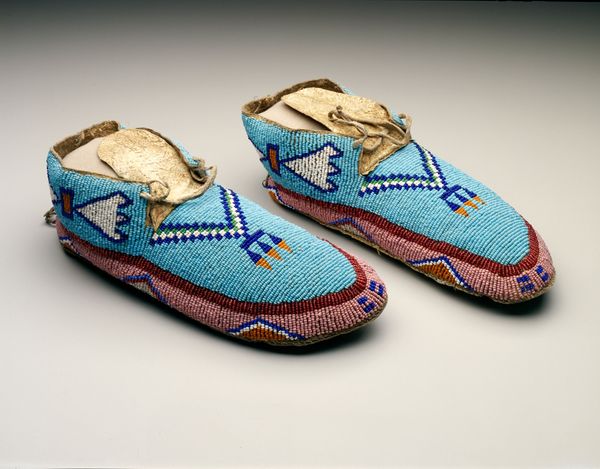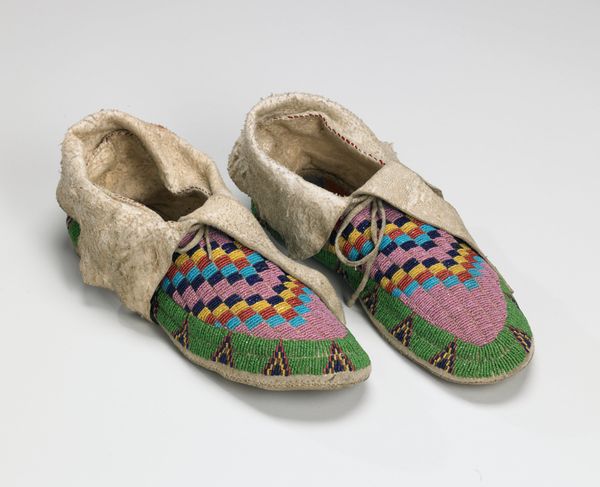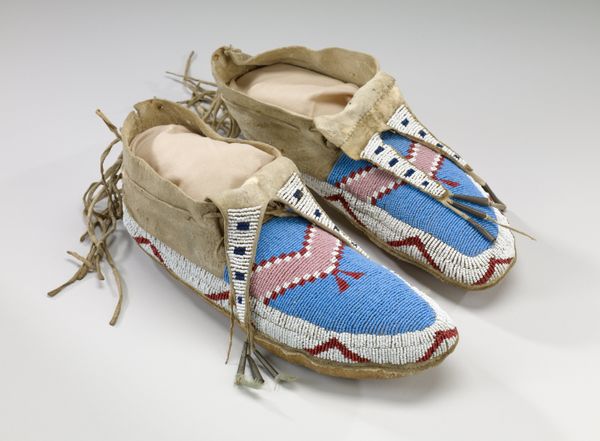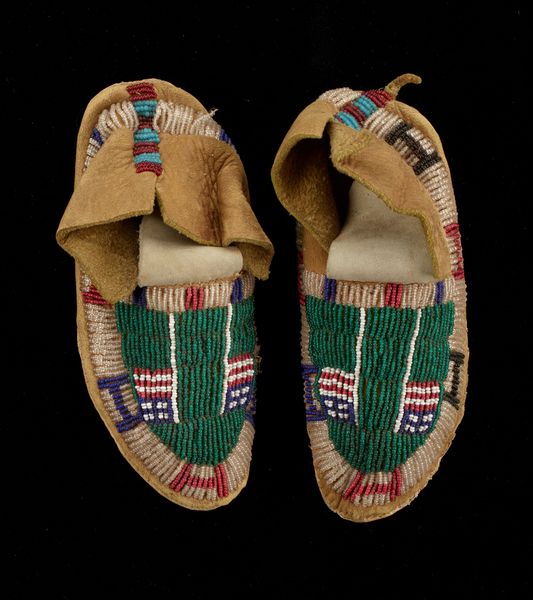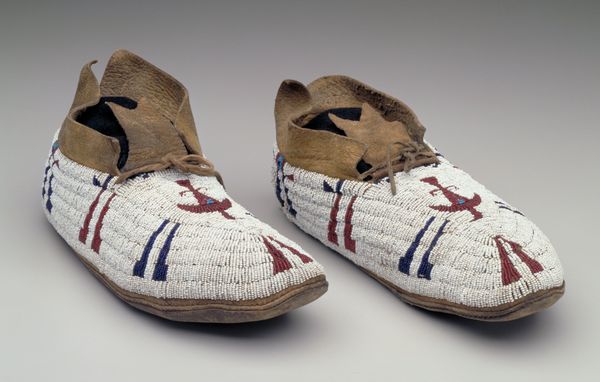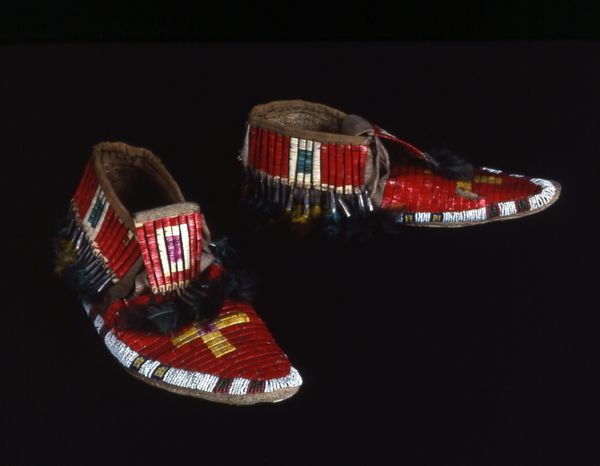
fibre-art, textile
#
fibre-art
#
textile
#
geometric
#
indigenous-americas
Dimensions: 5 1/16 x 4 x 10 1/4 in. (12.9 x 10.2 x 26 cm) (each)
Copyright: Public Domain
Editor: Here we have a striking pair of Pikuni Blackfeet women's moccasins dating from around the 1880s, made of fibre and textile. I’m immediately drawn to the intricacy of the beadwork; the geometric shapes seem so precise. What can you tell me about their composition? Curator: Indeed. Notice the meticulous arrangement of beads. Observe the way the white ground highlights the colorful geometric motifs. The motifs are not merely decorative. Instead, the use of repetition, symmetry, and the defined palette, construct a unified composition which elevates them to high art. What do you make of the angular designs, in particular? Editor: I guess they lend the piece a sort of dynamism, even a sense of movement. Does the composition adhere to a traditional artistic standard or style? Curator: They speak to traditional aesthetics of Plains beadwork. Consider the interplay between the smooth, unbroken surface of the tanned hide and the textured, patterned areas of beadwork. The juxtaposition invites closer examination. These create a visually stimulating experience, yes? Editor: Absolutely. The combination of textures and colours gives the shoes depth and personality. They almost don’t look real, but miniature artworks instead. What do you take away from your careful visual analysis of this work? Curator: Primarily, it allows us to consider these functional objects as refined works of art, where structure, surface, and color interact in complex and satisfying ways. Such elements communicate aesthetic and artistic intentionality beyond utilitarian purpose. Editor: This was illuminating. I hadn't appreciated just how much could be deciphered through formal observation alone!
Comments
No comments
Be the first to comment and join the conversation on the ultimate creative platform.




